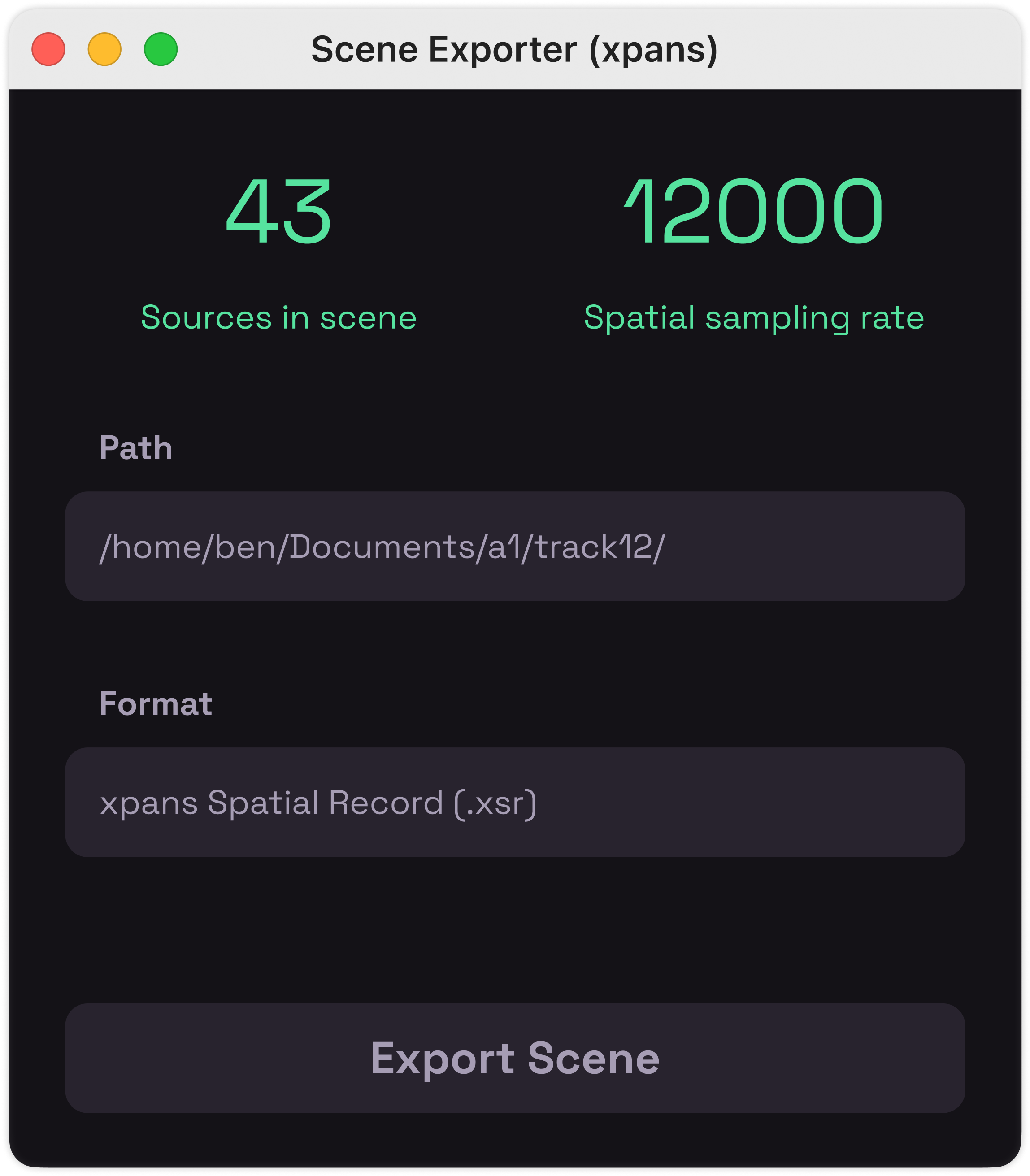
About
xpans is an ecosystem of spatial audio technologies centered around the concept of virtual audio sources. Each source has its own position, extent, shape, and rotation in virtual space. This enables adaptive audio in consumer listening experiences and unlocks spatially-aware processing in production workflows. xpans builds in both realms.
RESEARCH
xpans was born out of frustration with other spatial audio ecosystems, specifically Dolby Atmos.
Dolby Atmos is the leading spatial audio ecosystem. It uses proprietary software and comes at a considerable cost to independent audio creators. Based on my years of research and personal experience in my production workflow, Atmos appeared to have several usability issues at its core. xpans addresses several of Atmos’ shortcomings and attempts to fulfill others’ visions for spatial audio workflows and user flows.
As a campaign, xpans targets developers and audio engineers exclusively. To consumers, xpans should be nearly invisible if its user experience design is successful. xpans is made to be implemented in existing software with many consumers never even noticing.
SOFTWARE DESIGN
DELIVERY
xpans’ spatial codecs will store zero audio data. They would only store spatial data meant to be paired with audio data, ideally in container formats like MP4, OGG, and Matroska, allowing any spatial codec can be paired with any audio codec. Meanwhile, Atmos encodes spatial data in its own proprietary AC-4 format, meaning content delivery to consumers is mostly limited to Dolby’s lower fidelity audio codecs.
This model of delivery makes implementing support for xpans much easier for developers and encourages them to write reusable and maintainable code.
PRODUCTION
xpans’ most powerful innovation is the Spatial Property Transport (SPT) protocol. SPT enables audio plugins, audio workstations, and other devices to send and receive spatial audio properties in a realtime environment. This unlocks potential for spatially aware audio processing: the ability for plugins to generate effects based on where audio sources are in virtual space. Audio engineers can heighten immersion or create otherworldly sounds that change in timbre as their sounds move through the room.
Based on my research, the SPT protocol is the first and only of its kind. Other protocols (i.e. ADM-OSC) must use local network sockets to send and receive spatial properties while SPT stays under the host software’s complete control.
SPT currently uses the MIDI protocol as a sort of ‘wrapper protocol’, functioning within existing programs and APIs until developers of that software might decide to support SPT natively.
WORDMARK + LOGO
The word “Expanse” contains the word “pan”. Panning in audio is what creates a large part of a spatial impression in a mix. The two letter E’s were removed from the word to symbolically “take off the guardrails” to allow the inner letters to be out in the open.
When read silently, the name may read “X-pans”, but when read aloud, it sounds like the word “expanse”. People have to “hear it to get it”, which is exactly what the brand’s project is about.
The logo uses repetition to illustrate forward movement and shapes of audio sources, trailing sound waves similar to the “doppler-effect” in sound physics.
SCENE EDITOR
The Scene Editor plugin is responsible for giving sounds spatial properties. These spatial properties are then sent to other audio plugins and eventually the audio renderer, which is responsible for mixing sounds for the user’s listening configuration.
Scene Editor uses xpans’ Spatial Property Transport to send spatial properties of audio sources and is capable of overwriting spatial properties that it receives.
SCENE EXPORTER
The Scene Exporter plugin takes in all spatial properties that it receives through the Spatial Property Transport and writes everything to a file on the user’s system. This allows users to create adaptive audio files without their host audio software supporting it natively.
Currently, the only format the plugin writes to is xpans Spatial Record (.xsr), a text-based YAML format made to be human readable and easily modifiable to support xpans’ rapid iteration in early stages of development.
ADDITIONAL NOTES
At the time of writing, the xpans ecosystem is designed and written entirely by me using the Rust programming language.
I plan to open source the project in Q4 2025, welcoming a community effort in building the project from there.

